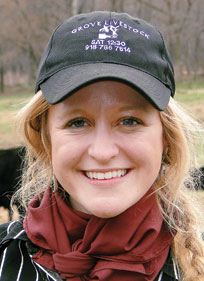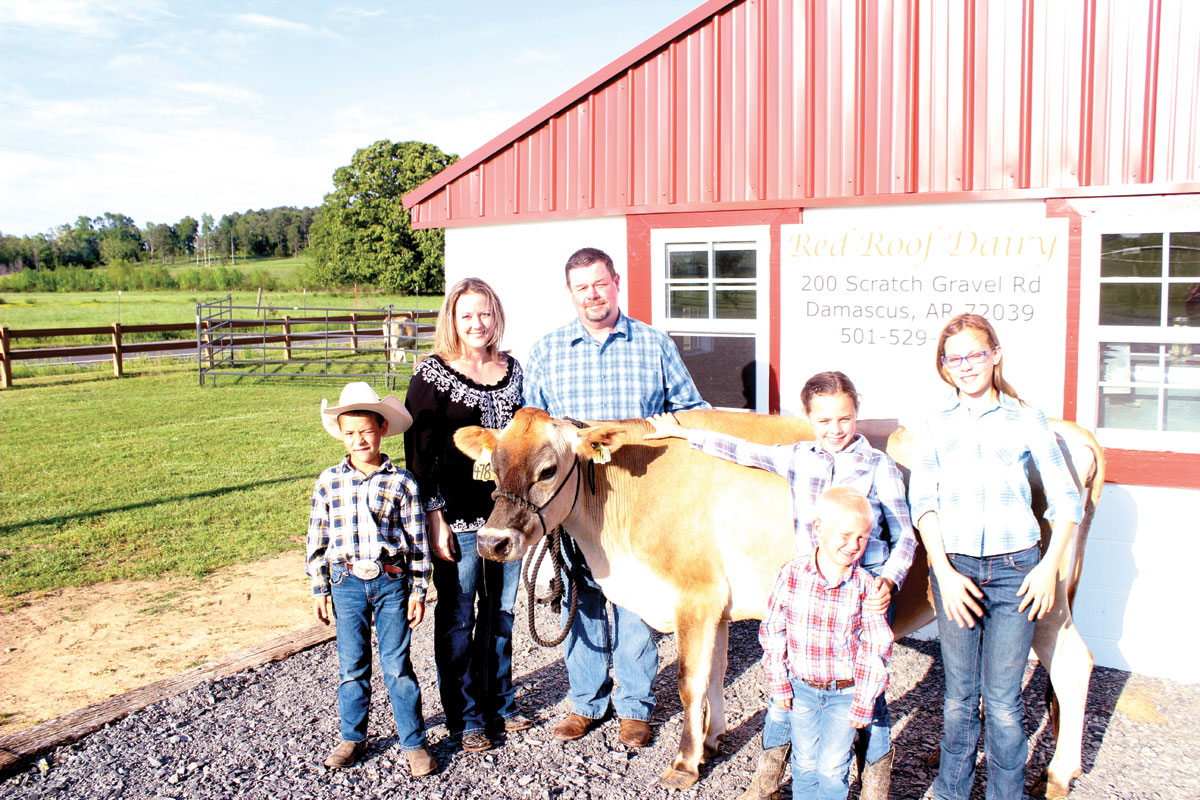
Multi-generational Hereford operation monitors changing markets and trends
PRAIRIE GROVE, ARK. – Multi-generational farms are part of the heart of America. Kinzer Polled Herefords was established in 1961 in Prairie Grove, Ark.
The owners are Eddie and Lorraine Kinzer with their daughter Jennifer Emerson and husband Ryan Emerson. Ryan and Jennifer and daughter Jill do the hands-on work although Lorraine still handles all the registration papers and farm data.
One of the biggest challenges for the Emersons is time. Jennifer works full time at her business, Emerson Appraisals out of Prairie Grove, while Ryan is project manager for Emery Sapp and Sons, a civil contractor business in Springdale. Jill is in her junior year of high school, and has accepted a full softball scholarship at Texas A&M-Commerce, where she plans on studying agricultural communications/ marketing.
“I will most definitely live on a farm and hopefully a cattle farm because that’s what I’m most familiar with,” Jill said.
While shifting management from one generation to another is never easy, this family pulls together well and produces high quality production and show cattle. One of the recent innovations from new generation management is expanding beyond Polled Herefords so Jill can compete in other classes.
Jill showed her first heifer when she was 3 years old and has done well in the show ring with credits, including the 2018 Supreme Breeding English Heifer at the Arkansas State Fair, the 2020 Reserve Grand Champion Hereford Heifer at the National Junior Hereford Expo, and the 2023 third-place Overall Market Steer at the Arkansas Youth Expo with a Hereford/Chi crossbred steer from Hereford dam she previously showed.
Another innovation is selling meat to area residents. The farm does not advertise or have a website but sells strictly by word-of-mouth.
“We usually hold back a selected premium number of steers but this year we are holding back a few more due to the increased interest. Steers are raised to roughly 1,200 pounds due to customer preference for larger steaks and increased marbling,” Ryan explained. “We sell from a quarter carcass on up and have many repeat customers.”
While it has always all hands-on deck for whatever needs to be done, each of the Emersons has greatest responsibility in one specific area but helps in all. Jennifer runs the family farm finances while Jill handles the care of the show animals, including the usage of a cooler room for optimum hair quality. Ryan handles everything mechanical, whether use, maintenance or repair of all equipment.
“I never will forget my introduction to cattle because I was raised on a farm that was always leased out,” Ryan said. “One day Eddie walked up to me and handed me a bull on a halter telling me to take it to a pasture and turn it loose. That was a sink or swim day when I learned the importance of understanding the animals you work with.”

Because of time constraints, the farm now runs around 50 mommas including recips. The farm uses AI for birthing to take place October to January because they believe winter conditions foster hardier calves. Cleanup bulls are turned out for March and April calves while a farm-raised, papered and well-developed 2-year-old Hereford bull currently in Jill’s show string will soon be used for semen production.
Because overhead costs have risen dramatically and smaller calves are bringing “really good” prices, culled calves are taken to the sale barn at weaning which occurs when calves are 5 or 6 months old. Potential show cattle are held back as are replacement heifers as well as those selected for finishing for direct meat sales. The highest criteria for culling is structure because they believe structure is the root of all desirable qualities including hardiness, longevity and efficiency.
The whole herd is worked twice a year including vaccinations and sorting. Fly treatment varies annually according to conditions with methods ranging from vaccines to spraying to air guns with fly treatment balls containing the most concentrated formula. All cattle receive Washington County rural water and have access to ponds and tire tanks.
Farm grasses are Bermuda, fescue and crabgrass with their crabgrass hay preferred due to the higher protein content. To maintain grass health, cattle are rotated as needed with the land typically fertilize both fall and spring while keeping overhead costs in mind. Ever increasingly expensive commercial fertilizer is required because the farm is part of the Illinois River watershed and therefore restricted from using chicken litter. They overseed in November with wheat and rye.
Cows and bulls are grass fed with 30 percent protein tubs available in the winter and supplemented with meal and salt during the coldest times. Conversely, show cattle and feeder calves are grained with a 12 to 14 percent grain ration.
“The most important thing we have learned is that a farmer has to be observant and flexible rather than doing things the way they have always been done,” Jennifer explained. “What works best one year does not necessarily work best the next or for your next-door neighbor, and genetics are tremendously complicated requiring focused attention for maximize results. In addition, the market is ever changing and demand fluctuates drastically from year to year. Therefore, cattle owners need to be diligent in their efforts to stay up to date on the most recent market trends and practices.”







